Reunion Island has the advantage of being what one could consider an easy ‘object’ to define: since it is far from large, it is possible to approach the entire society without becoming dispersed in the study of vast territories. Also, Reunion island can be seen as a sort of target, with the volcano as a red dot in its centre, surrounded by a first circle of scattered mountain habitations, and then a second circle, limited by the sea, where the towns are concentrated and the vast agricultural areas are set out in tiers between the mountains and the sea. This structure gives even more focus to any observation carried out.
However, the society of Reunion Island is not simple to analyse. Its history has given the island a multitude of facets and left many social layers on its land, its villages and towns, over the years building a structure that has managed to function as a whole, while retaining the signs of its varied profiles.
This is the society we should try to understand, both its structure and its mechanisms, from the history that has created it to the internal and external relations that have shaped it.
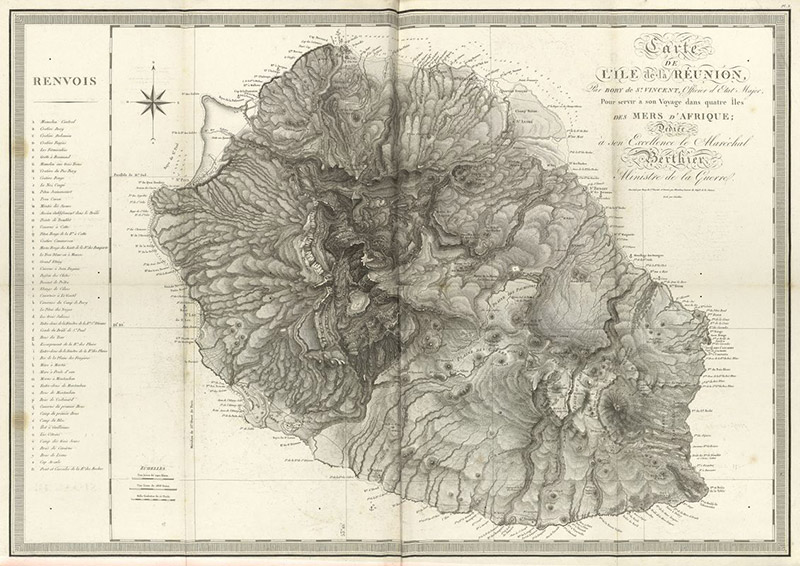
In 1970, the first vision greeting a traveller arriving, like me, in Reunion Island, was the sugar processing plant of La Mare, surrounded by the sugar cane growing on the vast mountain sides gently sloping up towards the mountains in the background: a breath-taking landscape, both familiar and disconcerting for travellers coming from the Caribbean islands.
From the start, Reunion Island would seem to such travellers to be very close to what they might have known and studied in other plantation territories, such as Martinique, Marie-Galante and Guadeloupe. Obviously, Reunion island belonged to the same family of islands as these, that geographers used to refer to as the ‘sugar islands’: tropical territories covered with sugar cane, interspersed with vast properties and sugar refineries. From the start also, one question appeared essential: did these images reflect the social structure of Reunion island as being, like in the West Indies and other tropical territories, that of a ‘plantation society’?
A society referred to as a ‘plantation society’ is characterized by the preponderance of agriculture focused on export crops, generally centred on sugar cane, and by a social and power structure directly organised around this dominant activity.
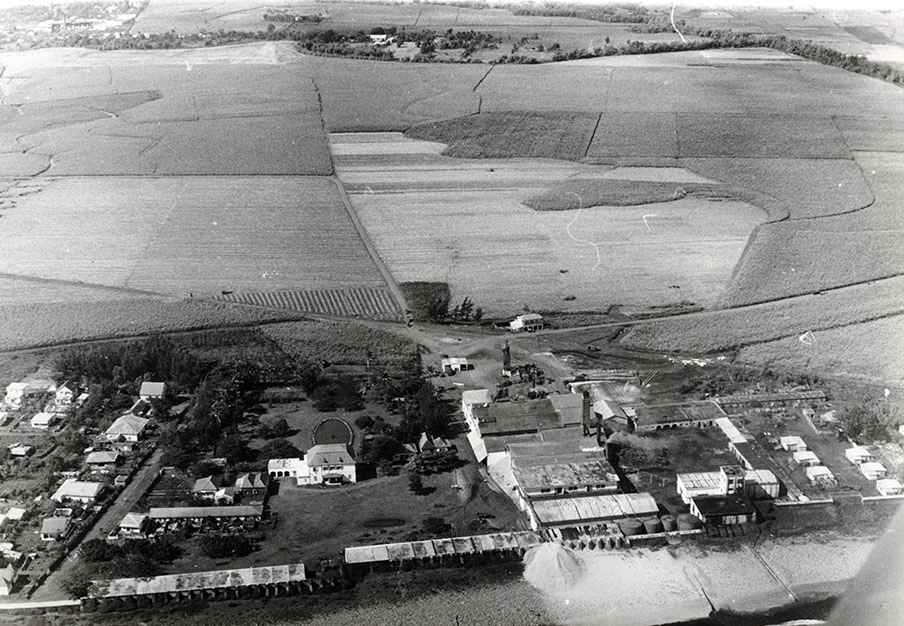
The links between slavery and sugar-cane plantations go far back in time. To trace them, we need to go back well before the birth of the Sugar Islands, exploring a chapter of history that has often been neglected, but which enables us to understand the relationship between a form of production and certain aspects of a specific society, more specifically the link between sugar estates and slavery. Sugar cane originated in New Guinea and its production developed in the south of India, where, for a long time, small family production was preponderant (the word ‘sugar’ comes from the Tamil language). Sugar was brought to the west by Arab merchants as a luxury product. However, after the creation of the Kingdom of Jerusalem following the Crusades, the production of sugar cane was introduced to the Indian Ocean region and to the Mediterranean islands. Sugar-cane production then changed dimensions, taking the form of plantations, far larger than mere individual agricultural holdings, thus introducing the need for a more servile labour force. However, since it was not possible to dominate Christian populations, landowners turned towards groups not yet converted to Christianity, mainly Slavic populations, hence the name given to this labour force (slaves, or ‘esclavons’ that gave the French word ‘esclaves’), a name that would be applied to them forever, becoming linked to their social status.
Sugar cane was brought to Spanish America very early on (Christopher Columbus’ father-in-law was a sugar-cane producer in the Canary Islands) and directly took inspiration from the Mediterranean model. In fact, Columbus suggested in one of his letters that the local populations he had come across could be put to work on the plantations. The resistance of the American-Indian populations actually made this impossible, forcing producers to turn towards the African slave-market, to which Europe, and particularly Portugal, had easy access.
Thus, the relationship between sugarcane/plantation/slavery developed on the basis of an economic logic that was part of a long history. This link then grew with the development of what was called the ‘plantation society’, taking on racial connotations, since slaves and masters had different origins.
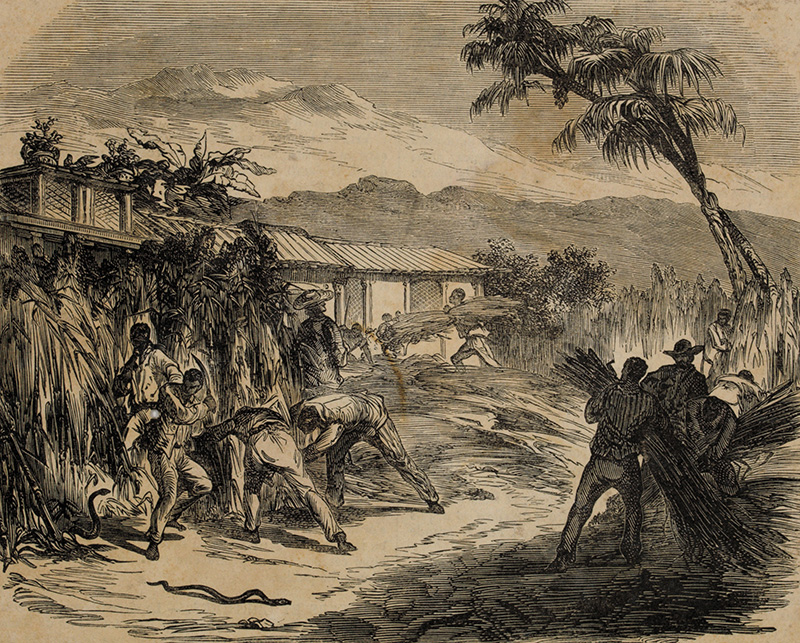
Unlike tobacco or coffee, sugar cane presents growers with an imperative: the cane must be processed to produce sugar in the short term, meaning that it does not really lend itself to small-scale production, as it necessitates achieving a minimum volume to make it economically viable. Apart from the purely agricultural work, it also implies an investment in premises, equipment and infrastructures, purposely made for extracting sugar. Economic viability requires the refinery to receive a continuous supply of fresh sugar cane adapted to its processing capacities, which encourages the growing of sugar cane at the expense of any other crop. The harvesting of sugar cane implies the use of an abundant labour force in order to maintain the pace and prepare the appropriate quantity of sugar cane to be crushed by the refinery. Various innovations enabled refinery-owners to process more and more sugar cane, encouraging monoculture at the expense of all other crops. Consequently, refineries, and later sugar processing plants, tended to take over more and more land and turn to sugar cane, meaning a larger labour force and investment in new and more expensive equipment.
Apart from this phenomenon of land concentration, over the years, competition between the most efficient structures led many refineries to close down, with ever-increasing concentration and following a momentum where the agro-industrial activity of sugar-cane plantations prefigured the emergence of industrial capitalism.
The economic organisation of the plantation influenced the whole structure of the society, as the plantation literally became its matrix, characterized by certain fundamental attributes:
– The existence of agricultural and industrial units centred around sugar production
– Sugar-cane producers owning huge portions of good-quality land in order to make the activity cost-effective
– A technology which, as it evolved, gave more and more importance to capital
– An abundant, cheap and readily available labour force. Originally based on the system of slavery, this was extremely limiting, due to the status given to the slaves. In the tropical islands, racial duality appeared with the organisation of slavery, leaving scars both in the flesh and in the history of the society, long after the abolition of slavery, a source of rifts in the society.
– A legal and political framework that would guarantee the social and economic hegemony of sugar-producers, leading this group to dominate the society, eventually forming an aristocracy (“Sugar makes you noble,” as the saying goes in the West Indies).
The above framework is far too general to be applicable throughout the meanders of history; over the years, each territory, each island, developed it in its own fashion, but the basic structure remained the same.
At the basis of this system were the family ‘estates’ (‘l’habitation’ in French, a word that remains in some forms of the Creole language), a basic unit of exploitation that pre-existed sugar cane. In his extensive thesis ‘La société d’habitation à la Martinique, un demi siècle de formation, 1635-168 (Estate society in Martinique, half a century of development, 1635-1685) Jacques Petitjean Roget explains how this basic type of agricultural holding, which developed from plots granted to new settlers arriving on the islands, was set up at the beginning of the colonisation of the West Indies: estates formed the basic unit of the new-born society. Throughout its progressive modifications, the estate left its mark on the landscape and on the society. To this day, certain family estates remain the foundation of sugar production.
Identified with a location and the family owning it, the estate was the basis underlying the network of family and social relations between the ‘inhabitants’. The estate, which produced the dominant minority, ruling over the economic life of the island, was not only a production unit, but also a social unit where workers, owners and officials all lived together. It was the source of control over the society, where, depending on the place and time, relations were marked by authoritarianism and paternalism. In a system of marked vertical integration, each member lived with his or her superior, present on the estate itself.
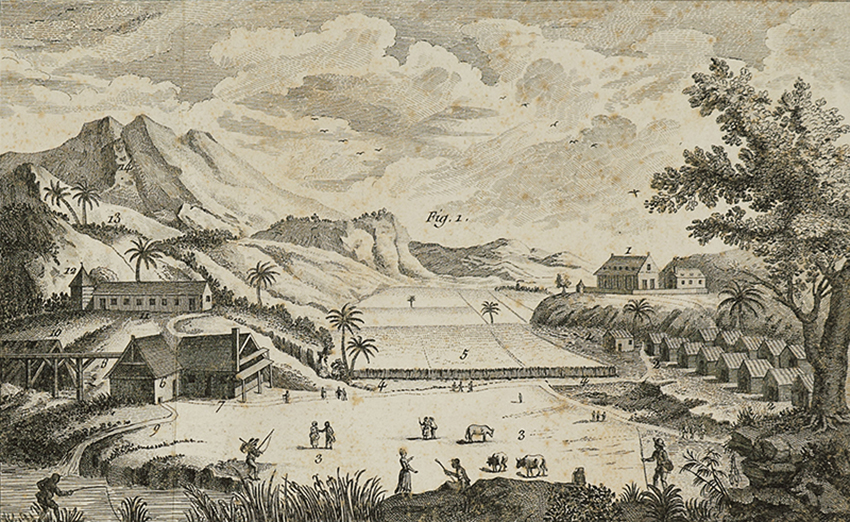
The concentration of sugar production in fewer, larger refineries, led to the consolidation of estates and to the creation of agricultural corporations where many land owners were merely growers, whereas refinery owners gained more and more power, even though the latter remained fragile, as witnessed by the number of refineries that became bankrupt.
This social structure thus formed further exacerbated the contrast between a social class, in a minority, the sugar-cane growers and refinery owners who possessed most of the land, and the rest of the population. Beyond its economic control, the plantation imposed its definition of the interests of the society in general, through its own projection, thus crystallising the extreme inequalities. This automatically led to what George Beckford, an analyst specialised in plantation societies, defined as ‘persistent poverty’, an unavoidable form of poverty for the rest of the population for the reason that “everywhere (the plantations) occupy the best land, pushing away farmers to the limits of the mountains, the consequences almost always being a division of the plots and a very low standard of living for the farmers”.
The abolition of slavery was not synonymous with the abolition of plantations, and the agricultural land made available for the settlement of the newly-freed population corresponds to Beckford’s analysis. The plantation society resisted the upheaval of abolition, and the former structures and social relations were then reinterpreted, notably during the arrival of indentured workers, sent to maintain the continuity of this very same reality under a new façade.
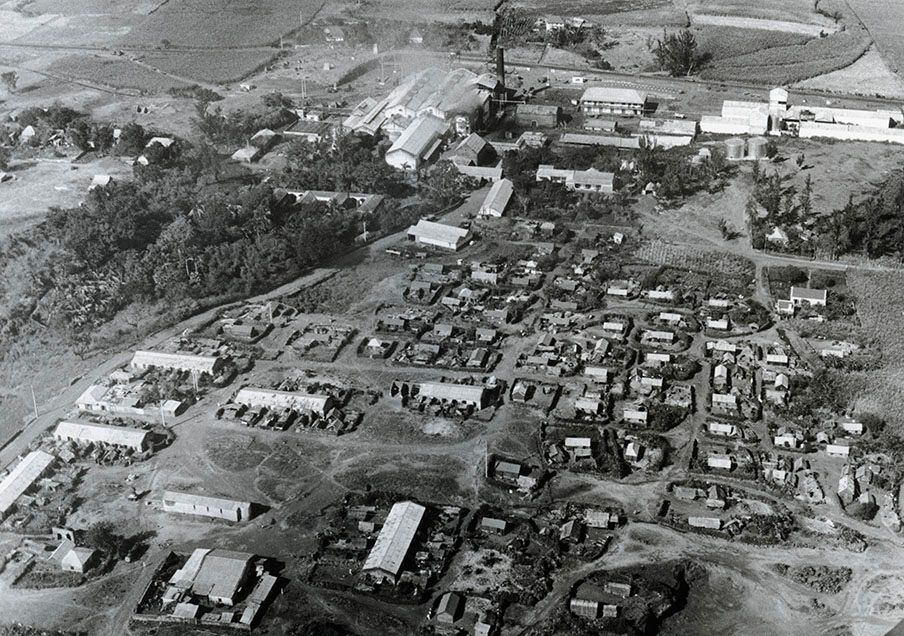
Jean Legros. [1950-1960]. Photograph.
Jean Legros (1920-2004) private fund. All rights reserved
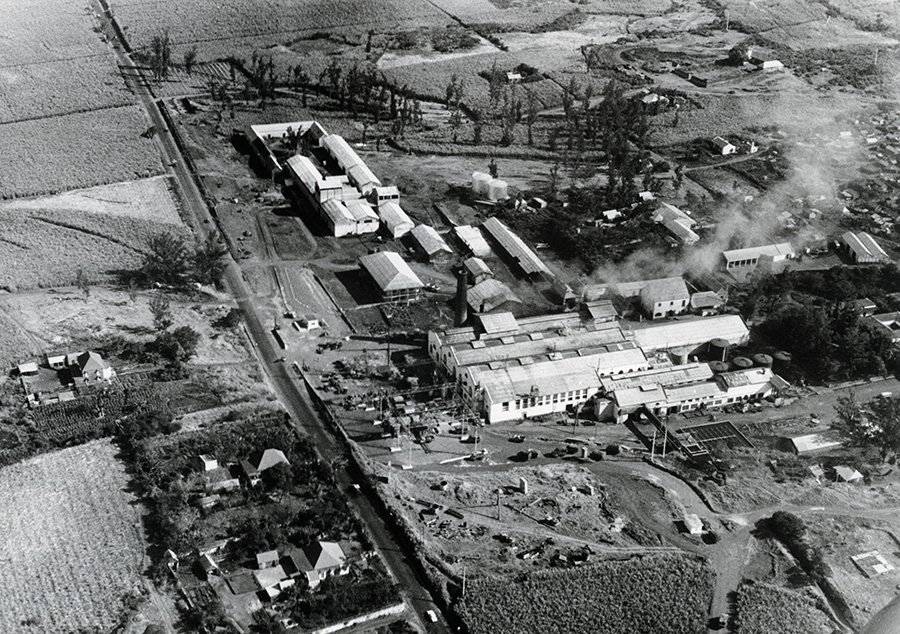
Jean Legros. [1950-1960]. Photograph.
Jean Legros (1920-2004) private fund. All rights reserved
Would the first impression of Reunion Island as a ‘plantation society’, on the basis of all the apparent evidence, be an accurate one? Apparently, the island seemed to fit the definition. However, the question seems more complex and deserves to be examined, for different reasons. First of all, for far longer than the West Indies, Reunion island was a plantation society that remained external to the sugarcane trade and its consequences. The dominance of sugar cane as a crop occurred during the 19th Century – relatively late – enabling a greater diversity of production, but also greater flexibility regarding control of the land, less stability for the important landowners who set themselves up as an aristocracy, as well as a separation, at least partial, between social status and origins, as, from very early on, some of the most important plantations also belonged to people of Indian origin. While in the West Indies and in Mauritius, the gap between white people and people of other colours was clear, on Reunion Island there were many social and ethnic transitions. Social mobility and permeability, far from fixing in the society a dominant portion of the population, which remained partially open, enabled some members to rise and others to fall. Other than that, similarly to Basse-Terre in Guadeloupe, the topography of Reunion island offered many possibilities for farmers to develop.
However, despite its specific characteristics, Reunion island fully corresponded to the model of a plantation society, which dominated the island over a long period, proof being the ‘focus on sugar’ on the island, the links between its upper class and the plantation society, as well as the extension of large estates to accommodate the sugar-cane crop. Carrying out an analysis, even brief, of the evolution of Reunion island society through the history of some of its estates, is an extremely relevant process. The story of the estate which today has become the Historical Museum of de Villèle in Saint-Gilles-les-Hauts is a perfect example. During the early period, through consecutive legacies, there was a division of the initial plot originally assigned to Thérèse Mollet in 1698. This ‘earth-chopping machine’ (machine à hacher la terre), as Jean Mas called it, operated until 1785, when the initial property ended up being divided into eight unequal parallel strips. A dramatic change occurred when Henri Paulin Panon Desbassayns, and later his widow Madame Desbassayns, developed the plantation and made it their mission to reassemble, piece after piece, the initial property, with the exception of a very narrow section. They set up a refinery, increased the number of slaves and put their energy into turning the property into an aristocratic estate. They also built a chapel, with the aim of obtaining the special status of coming under the domination of the Church in Rome, as opposed to the episcopal see of Reunion Island, a goal they actually never achieved, and made marriage alliances with the aristocratic family of de Villèle. All this was aimed at turning the estate into the perfect example of what most people in Martinique, Reunion island or Mauritius aspired to – generally in vain.
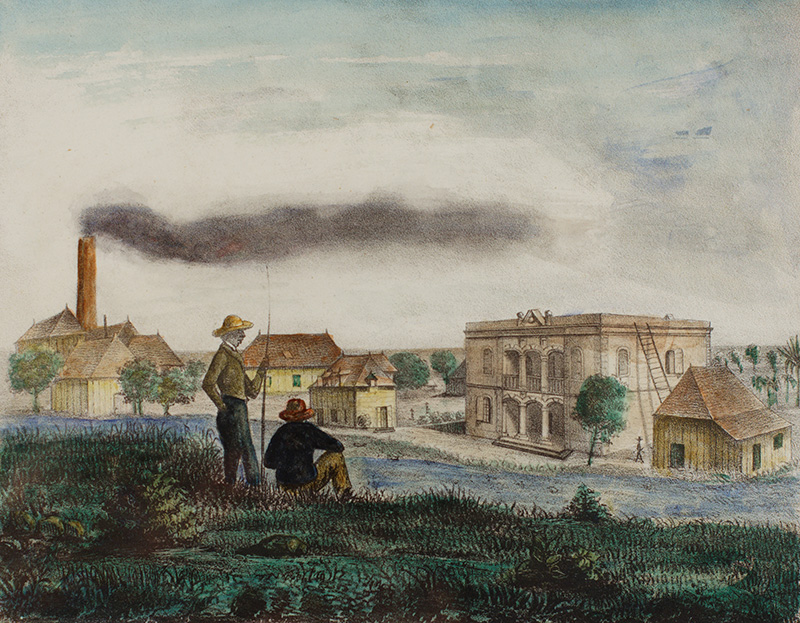
Then came the critical event, leading to the final downfall: in 1946, Reunion Island became a fully-fledged French ‘département’ (equivalent to a county). In 1948, ‘Les Sucreries de Bourbon’ (The Refineries of Bourbon Island) was set up, uniting several family structures and introducing a new management system for the land in order to adapt to the new regulations and make the most of new opportunities. The distant descendants of Madame Desbassayns were forced to give up their estates, which were merged together to form a far larger unit, even though some arrangements were made enabling them to retain their way of life by living in houses they no longer owned. Traces of the former society faded away, an important restructuring of the society that affected everyone, including the former settlers who became “orphans of a dying paternalistic universe,” an expression coined by J. and R. Potier.
The desire expressed by Madame Desbassayns in her testament in November 1845 was long gone! She wished her heirs, generation after generation, to keep the property intact, as a singe unit, and “develop it together and undivided for as long as possible”. What she declared was virtually an order: “My dearest wish is that this property and the slaves related to it will never fall into a stranger’s hands”.
As the large companies did not make sugar a priority of their economic logic, it became obvious that the capital from the land would be more profitably put to other uses. This led Les Sucreries de Bourbon to focus on trade, tourism and other activities, which turned it into a conglomerate with international activities, removing the word Sucrerie (Refineries) from its title.
When Reunion island became a French department (a process called ‘départementalisation’ in French), the resulting shock-wave led to a restructuring of the society. The left-wing elected members of the local government bodies, who had promoted this change of status, had foreseen the transformation. Due to the delays in applying changes and the inevitably permanent character of certain elements, the accuracy of their predictions was not initially apparent, but departmentalisation brought a slow revolution that would put an end to the plantation system and the society created by this very same system.
However, for a long time, the former powers and structures buffered the consequences. The plantation society was solidly in the hands of a dynamic social group of people who set themselves up as the spokespersons of the economic life of the island, thanks to the support of carefully-chosen members of the local government bodies. Technical progress and the bold choices of certain company directors, inspired by the example of Mauritius, where plantations had survived the hazards of independence, appeared to ensure a real future for the plantation society. However, we can now appreciate the extent to which changing the rules in a society that used to function thanks to the massive introduction of sugar would lead to the emergence of a new society structure.
What could be defined as the end of the plantation society, however, both in its economic foundations and in the most visible forms of its social power, meant the disappearance neither of its remains, nor of its scars.
Some of its remains are now listed as heritage, the most obvious ones being the Villèle Historical Museum or the Stella Matutina Museum on Reunion Island, the Factory of Beauport in Guadeloupe, or the Habitation Clement in Martinique. Other traces, more and more frequently expressed, are defined as intangible heritage. These were born out of what the slaves and workers brought with them from Madagascar, Africa and India and transmitted, sometimes in a surprisingly stable manner. Mostly, however, these elements were interwoven and exchanged within the habitations and integrated into the many facets of the Creole culture (language, arts, family relations, food, etc.).
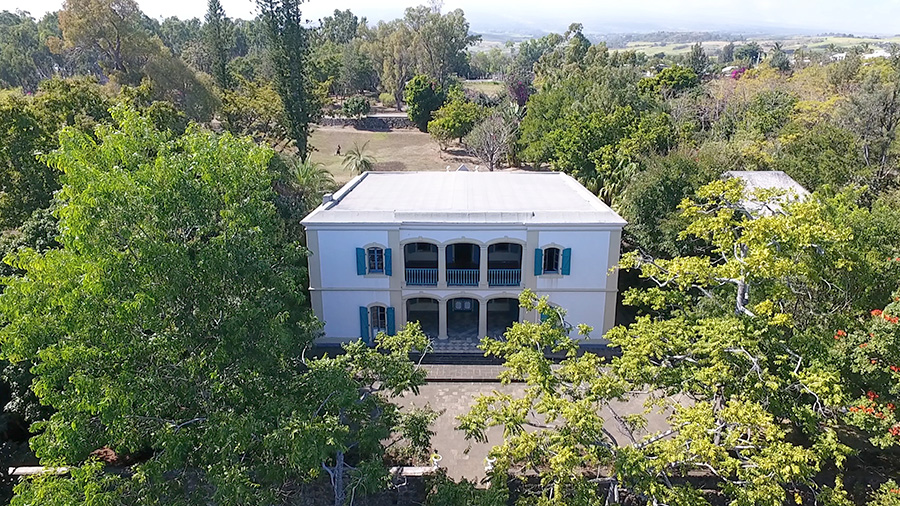
Other remains of the plantation society are more pervasive and subtle: in the social stratification or access to the leading roles in the society. There still remain networks linking family members of plantation owners, the urban economic elite and members of the professions. In social and political life, traces of the persistence of relations of hierarchy/dependency/revolt towards those who represent authority are still evident, as well as in land management and the distribution of dwellings: some neighbourhoods are the direct remains of former ‘camps’, whereas some scattered traditional Creole houses bear witness to the practice of sharecropping.
Other forms of legacy can be seen as ‘scars on the soul’ for the descendants of the slaves or indentured workers, who were marked by a status that would seal their inevitable dependency. Over a long period, the racial and cultural consequences of a merciless hierarchy forced them to bend under the weight of a disdain they learnt to share, which led to a ‘racialization’ of the society that can be witnessed through many facets of the social life and the values linked to various elements of culture, particularly in the West Indies. This was the background from which emerged various forms of identity reconstruction.
Thus, the plantation society appears as a restrictive framework that crumbled away, but would it be the breeding ground for a certain disarray, experienced by the many social ‘outcasts’, or would it herald a better-balanced and more harmonious future for those that were dominated, as well as structured, by this society?
Download the paper: Transformations to land distribution and evolution of the plantation